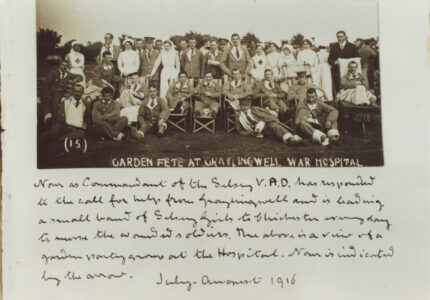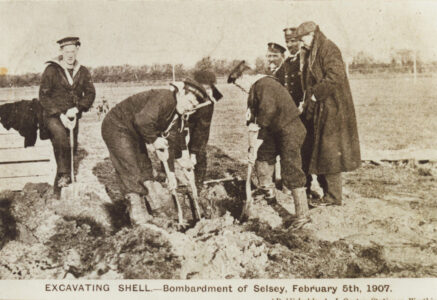
WW1 photos
In 1914 the population of Selsey was about 1500 people. The Chichester Observer records in September 1914 that 52 Selsey men had joined up, 35 for military Service and 11 as Territorials. An intense recruitment effort was led by Sir Archibald Hamilton and by Christmas 1914 he reported that only 25 able-bodied men in Selsey had not joined the colours and of those 10 were in the National Reserve. By the end of the war 300 men from Selsey had been on active service; about a third of them on Naval duties.
The first death in action of a Selsey man occurred in February 1915 when Cecil Cotten, a Private in the 7th Battalion of the Royal Sussex Regiment, was killed in action at Cuinchy, Northern France.
The families left behind were also affected. The small population was close knit, they worked together with the Manhood Red Cross Aid Society, sending money to Belgian refugees, and making or donating over 1950 garments, 26 bags of swabs and 20 sandbags to the war effort.
In June 1915 about 30 women formed a Selsey Voluntary Aid detachment and in 1917 some men too old to fight became Selsey Volunteers, a unit of the Home Defence Army.
As the war went on, Zeppelins were seen in the area and in 1917 restrictions were introduced for fishing and pleasure boats which had to stay with in one mile of the coast. Voluntary rationing was introduced, becoming compulsory in February 1918.
At the end of the war, Peace Day on 19th July 1919, was celebrated with a service of remembrance, a sports afternoon, tea and an evening concert.
The War Memorial at the entrance to St Peter’s Church was dedicated in May 1921. There are 57 names on it: 43 men served in the Army, 11 in the Navy and 3 in the Royal Flying Corps. Of those in the Army,18 served in the Royal Sussex Regiment, 5 of whom died in or around the Battle of the Somme. Of the Naval contingent, 4 died in the Battle of Jutland.

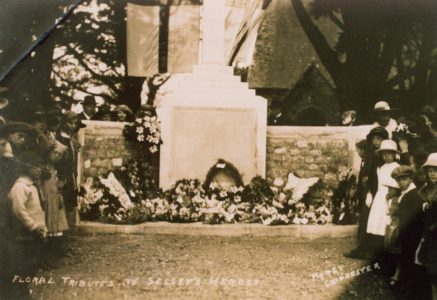
Selsey: War memorial
View image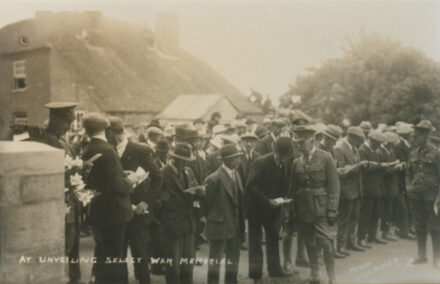
Unveiling of war memorial
View image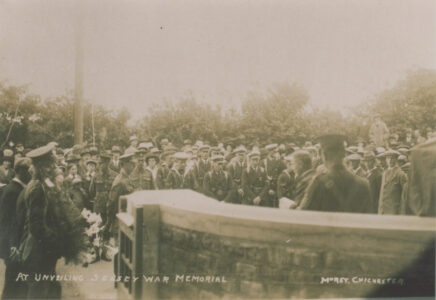
Unveiling of War memorial
View image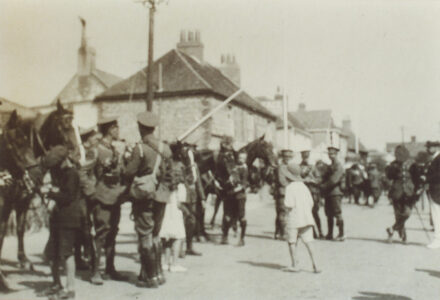
WW1
View image